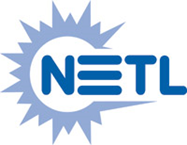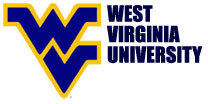- Speakers should arrive at least 10 minutes prior to the start of the session and introduce themselves to the Session Chair.
- A cable TV monitor in each room will be used to time the sessions. This timing will be strictly enforced by the Session Chair.
- Contributed papers are limited to 10 minutes with 2 additional minutes for discussion. This is followed by 1 minute for transition to the next paper and introduction of the next speaker. During the talk, the monitor will indicate at 8 minutes that the speaker has to finish in 2 minutes. At 10 minutes, it will indicate that the speaker’s presentation time is over. At 12 minutes, it will indicate that transition to the next speaker must occur.
- A minisymposium paper is 26 minutes long, including questions and transition. This makes a minisymposium paper twice as long as a regular contributed paper, allowing attendees to move between regular talks and minisymposia. Minisymposium talks will be 20 – 22 minutes long with 5 – 3 minutes for discussion and 1 minute for transition. However, note that the time monitor in the room will keep the regular 13 minute schedule.
- The Otto Laporte and Stanley Corrsin Lectures are 40 minutes with 5 additional minutes for discussion (total 45 minutes). Invited lectures are 30 minutes long with an additional 5 minutes for discussion (total 35 minutes). The Andreas Acrivos Dissertation Award Lecture and François Frenkiel Award Lectures are 17 minutes with 3 additional minutes for discussion (total 20 minutes).
- Each presentation room is equipped with an LCD projector, screen, lavalier microphone and pointer. Speakers must provide their own laptop computer. Macintosh users should provide their own adaptor to connect their laptop to the projector. Speakers are responsible for procurement and cost of renting any additional AV equipment. Also note that the APS is not responsible for the security of any personal computers.
- There is very little time to recover from an AV malfunction, should one occur. Please check for the following common reasons for malfunctions before your presentation:
- Meeting room projectors will have 1024 by 768 resolution. Please set your laptop resolutions to 1024 by 768 or lower. Your images will not display properly if your laptop resolution is higher than the projector’s.
- Set the power profile, monitor profile and screensaver on your laptop to turn off the sleep/hibernate mode. Your laptop will usually revert to its default resolution if it goes into sleep/hibernate mode.
- Animations and equations in PowerPoint are not necessarily compatible across different versions. If you load your presentation on to a different computer, please check that it displays correctly.
- Show up ten minutes before the session starts, and ask the student volunteer in the room to connect your laptop to the six-way switch; do not do so by yourself.
- Macintosh users should bring their own adaptor to connect their laptop to the projector.
- A Speaker Ready Room staffed by technicians is provided for your use. Please test your presentations and confirm your laptop settings in the Speaker Ready Room prior to your talk.
Please Note: Speaker Ready Room is located in the Convention Center – Room 309.
ADDITIONAL NOTES TO SESSION CHAIRS:
- Please be on time. Arrive in the presentation room at least 10 minutes prior to the session start time. Just before the session begins, briefly introduce yourself and explain the timing system to the audience.
- Start the session on time. Announce the first abstract and author when the monitor timing system signals the beginning of the talk.
- Strictly adhere to the timing signals. The purpose of these timing signals is to allow attendees to move from one session to another and to be able to rely on the exact time of each presentation as listed in the program. Speakers must be asked to stop when their allotted time is up.
- Please check the Corrigenda and program agenda for your session. If a presentation has been withdrawn or should a speaker fail to appear, allow the preceding discussion to continue, or suspend the session until it is time for the next scheduled abstract. You may allow a speaker who misses his scheduled time to speak at the end of the session if time allows.
- All meeting rooms will have a student volunteer to assist you with running the session.








